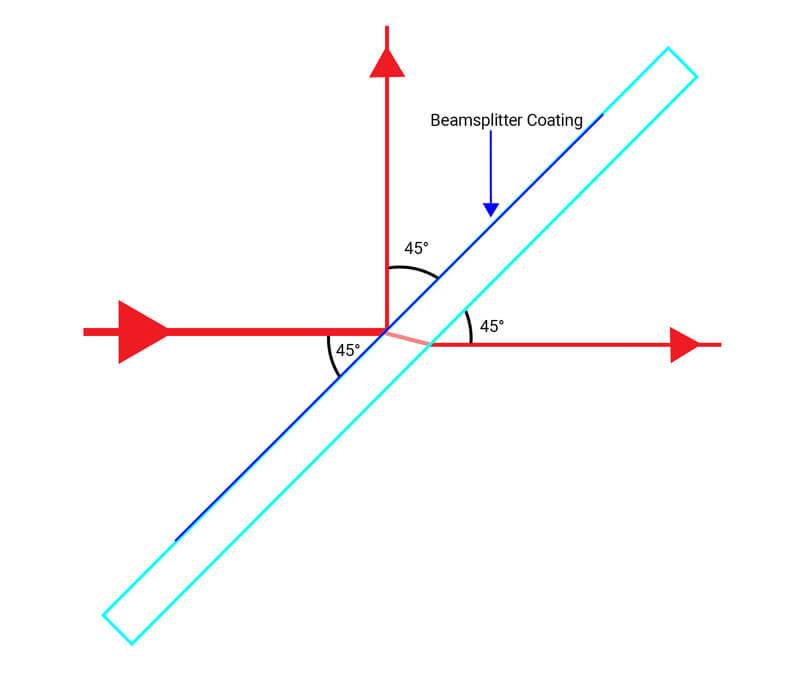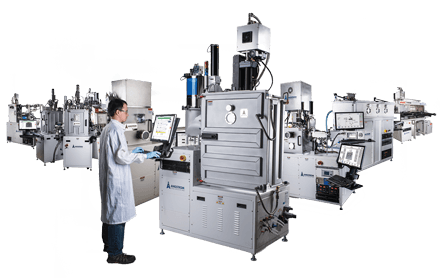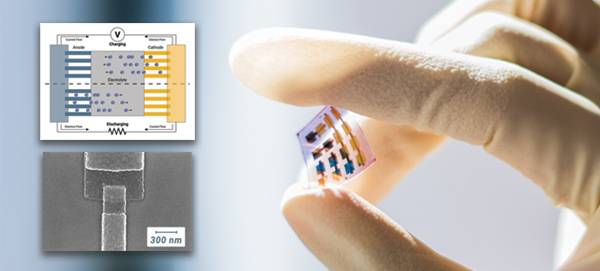Beam Splitters
As its name implies, a beam splitter is a device that splits a beam of light into two different beams. The incident light usually hits the beam splitter at a 45° angle. If the beam splitter is designed to split the beam in a 50/50 ratio, then half of the beam will be transmitted through the beam splitter and half of the beam will be reflected off its surface and travel perpendicular to its original direction.
Beam splitters can be made from many different designs. A popular design consists of two triangular prisms pasted together to make a square. The thickness and composition of the resin between them can be adjusted so that 50% of the light is transmitted at a 45° angle and 50% of the light is reflected. Another design consists of a glass substrate with a very thin coating of a reflective metal, usually aluminum. The coating is made thin enough that 50% of the light can be transmitted. Instead of a metallic coating, a series of transparent coatings of different refractive indices can be used in order to reflect the light. When this is the case, the reflection and transmission coefficients depend on the wavelength of light.







